Motorhome weights and payloads: a beginner's guide
Why you must know the weight of your motorhome, your motorhome payload and how to up-plate your motorhome if it is overloaded
Here we show how to calculate your motorhome’s payload, which will help prevent you overloading your motorhome.
We’ll also explain what to do if your motorhome is overweight. Overloading a motorhome is not only dangerous but also illegal.
Page contents
- Motorhome weights explained
- Motorhome weights terminology
- Calculating your motorhome payload
- Motorhome replating and up-plating explained
- Motorhome downplating
- Critical brake testing
- Motorhome driving licence categories
- Final thoughts
- About our magazines
Words by Peter Vaughan
Motorhome weights explained
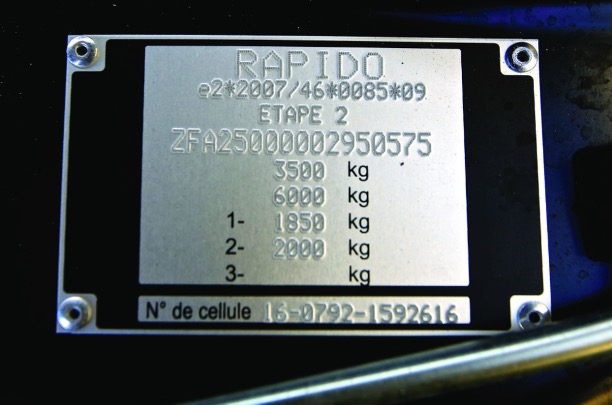
(Staff photo)
Before you can calculate a motorhome’s payload, you must know its current unladen weight and its maximum weight. First check your motorhome’s weight plate, which is normally found just inside the driver’s door or under the bonnet.
There will often be two or even three weight plates on a motorhome. These are known as stage plates, and, at each stage of the motorhome’s construction, each company involved with the vehicle will have added their stage weight plate.
- Stage 1 is referred to as the base vehicle manufacturer’s weight plate and will have familiar names like Fiat, Citroën, Ford, etc. You can ignore this weight plate.
- Following the base vehicle manufacturer’s weight plate, you will may find a chassis weight plate, such as from Al-Ko. This is the Stage 2 weight plate and again can be ignored.
- The final stage in the process, prior to registration, will be the motorhome manufacturer’s weight plate. This weight plate overrules all the previous stage plates and it is these weights that are the important ones. These are easy to recognise as they will have the name of the motorhome manufacturer on them, such as Swift, Bailey, Elddis, or in the case of the image here, Rapido.
This weight plate will list the maximum permitted weight of the motorhome (often referred to as MTPLM, MAM, GVW, etc).
In the image this is 3500kg, which means the motorhome must never weigh more than 3,500kg.
The second figure (6,000kg) is the maximum train weight.
The third figure (1,850kg) is the maximum weight for the front axle (axle 1), and the fourth figure (2,000kg) is the rear axle weight (axle 2).
Motorhome weights terminology
To confuse things a little, there are numerous terms for motorhome weights, which can mean the same thing...
Gross vehicle weight (GVW) – also known as MTPLM (maximum technically permissible laden mass), MAM (maximum authorised mass), or MGVW (maximum gross vehicle weight). This is largest weight the motorhome is allowed to be, with driver, passenger and all your touring kit on board.
Maximum train weight – aka GTW (gross train weight). This is basically the combined maximum weight of the vehicle and any trailer being towed.
Axle weights – as already described, each axle will be given a maximum figure on that weight plate – these often add up to more than the gross vehicle weight, so you need to make sure none of the axles are overloaded and that the gross vehicle weight is not exceeded.
Unladen weight – not to be confused with 'mass in running order' – see next. This is the weight of the vehicle without passengers or fuel.
Mass in running order (MIRO) – includes a 75kg weight for a driver on top of the unladen weight. This figure often includes other things, which vary by manufacturer so check the small print as some will include the weight of fuel in the tank, a full gas cylinder and full water tank in this figure (so your payload doesn't have to factor these things in).
Payload – what you get when you subtract your MIRO from your GVW. This often needs to include the weight of any passengers (excluding that already-accounted-for 75kg for the driver), the weight of any food or essentials, the weight of any optional equipment (added when new by the manufacturer or dealer, or anything added during the motorhome's life), along with the weight of any extra accessories you need to take with you. Read on for further information...
Calculating your motorhome payload

(Photo courtesy of Barry Norris)
Now you know the maximum permitted weight of your motorhome, it is a simple step to calculate your motorhome payload.
A motorhome’s payload is the difference between the maximum weight of your motorhome (in the case of the Rapido weight plate that is 3,500kg) and what it actually weighs before you’ve added all your kit and accessories. You can find this figure in your handbook, from the manufacturer or from the retailing dealer.
Now just subtract the latter from the former to calculate the motorhome’s payload. This payload figure is the maximum weight of all your equipment, people and things like water that you can add to your motorhome. Remember this is the weight of everything you will add before you set off, so allow for the weight of passengers, water, fuel, spare gas bottles, etc. Annoyingly, different manufacturers allow for different things in their weights so check what your motorhome manufacturer has allowed for.
Also remember, any extras added by the dealer or manufacturer, such as an automatic gearbox, awning or satellite system, will have to be subtracted from your motorhome payload figure, as will the weight of any extras, like a towbar or bicycle rack (and the bicycles on it) that you or any previous owners have added to the motorhome.
Online motorhome payload and motorhome weight calculators can provide a good estimate, but the most accurate method is to visit a weighbridge when there is no touring kit or people on board and that gives you the starting figure which you can then subtract from the maximum weight of your motorhome (in the case of the Rapido weight plate that is 3,500kg). This gives your exact motorhome payload figure.
Once you know your payload you can start to calculate what you can safely carry in your motorhome.
If you think you may be close to the maximum weight, return to the weighbridge and have the motorhome weighed again with all the touring kit on board (but without your passenger/s, and with an almost empty fuel tank and no water on board) to see how close you are to overloading your motorhome.
Motorhome weight chart
Here are some typical weights of accessories and options, but these figures are only a guide:
- Air-conditioning unit (roof-mounted): 35kg
- Automatic gearbox: 18-40kg
- Awning (driveaway): 10-30kg
- Awning (wind-out): 25-60kg
- Barbecue: 15kg
- Bike (pedal cycle): 15kg
- Bike (electric): 25kg
- Bike rack: 10kg
- Engine upgrade: 50-70kg
- Gas cylinder (full 6kg/13kg): 17kg/35kg
- Hook-up lead (10m/25m): 2kg/5kg
- Hose (15m on a reel): 2kg
- Leisure battery: lead acid (100Ah): 30kg
- Leisure battery: lithium (100Ah): 15kg
- Levelling wedges: 5-9kg
- Microwave oven: 11kg
- Motorcycle (125cc): 130kg
- Motorcycle loading ramp: 10kg
- Outdoor chair: 5kg
- Outdor table: 5kg
- Satellite TV system: 15kg
- Scooter (50cc): 100kg
- Solar panel (flexible), 100W: 1.5kg
- Solar panel (rigid), 100W: 15kg
- Toilet chemical (4 litres): 4kg
- Toolkit: 15kg
- Towbar: 60kg
- TV: 6-10kg
What to do if your motorhome is overweight
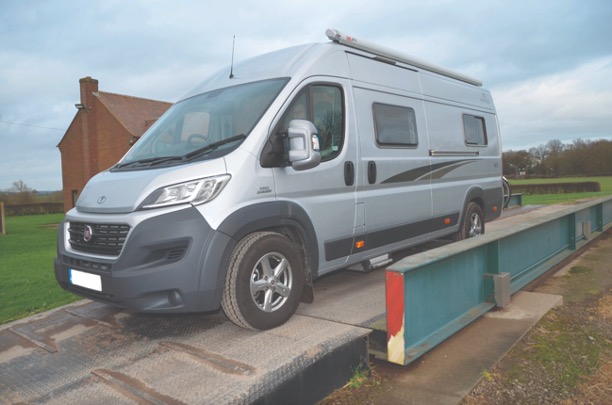
(Photo courtesy of Barry Norris)
Overloading a motorhome can have serious consequences. It is illegal and can lead to significant penalties, as well as having to unload your motorhome at the roadside. In addition, driving an overloaded motorhome puts excessive strain on the tyres, leading to premature wear or failure.
Suspension systems can become compromised, resulting in reduced ride quality and potential safety hazards. An overloaded motorhome will also have longer braking distances, reduced manoeuvrability, and will increase the risk of crashes. Moreover, driving an overweight motorhome may invalidate your insurance. It is simply not worth the risk and is easy to avoid.
If you have visited a weighbridge and discovered you have made your motorhome overweight, you have various options. But remember, if your motorhome exceeds its maximum permitted weight (in this case 3,500kg), it is crucial to take immediate action to rectify the situation. You must not drive an overweight motorhome on the road.
If your motorhome is only slightly overweight with all your touring kit on board then the first thing to do is to have a clear out. Do you really need to carry that inflatable boat with the hole in that you’ve not got around to fixing? Are 40 litres of bottled water essential? Be ruthless – any item that hasn’t been used in the last year, leave at home.
Don’t forget food: it’s easy to overlook that a tin of baked beans weighs around 0.45kg, a bottle of beer is 0.8kg and a 75cl wine bottle is typically 1.3kg. We were surprised to find that four pints of milk weighed 2.4kg! Even a cutlery drawer probably contains about 2kg of silverware.
After a thorough declutter, weigh each item you’ve removed (a simple method is to simply hold an item and stand on your bathroom scales, then subtract your weight). If this gets you under the weight limit, great. If you’re nearly under the weight limit, then consider emptying your fresh water tank (always travel with an empty waste water tank) and refilling it on the campsite. One manufacturer already recommends not travelling with any water at all. Remember to always calculate the weight of passengers, a full tank of fuel and any water you carry while touring – one litre weighs one kilogram. We suggest not travelling with water on board (or just a few litres) and fill up when you arrive at your destination.
If decluttering does not bring the overweight motorhome under its weight limit, consider replating your motorhome, or you can trade it in for a different model or get a towbar and use a trailer to carry some of your kit.
Here we investigate the most common way to solve the problem – getting the motorhome replated.
Motorhome replating and up-plating explained
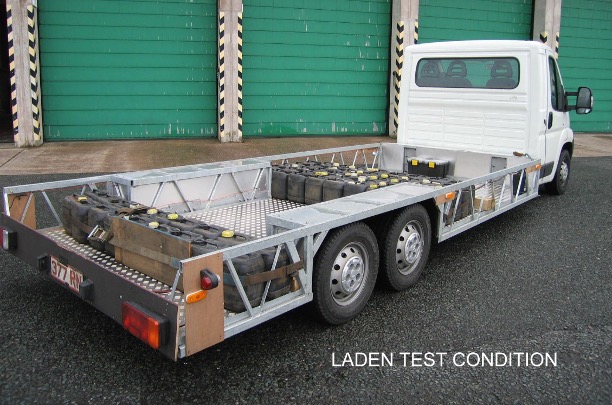
(Photo courtesy of SvTech)
Replating or up-plating a motorhome means adding more payload by increasing its maximum permitted weight but there are pitfalls and this is not something to be done without careful consideration of the company carrying out the replating.
Many motorhomes are built to a 3,500kg maximum weight limit, but, with professional work, can be uprated to 3,650kg or 3,850kg. Here are some simple questions to ask when choosing a provider to replate a motorhome.
- Does it have offices or is it just a man in a van?
- Does it have ISO accreditation and links to the vehicle manufacturers?
- Does it have liability insurance to ensure your vehicle is covered for the service it’s offering?
Professional providers of this service include the industry leader, SvTech. It explains what is involved in replating a motorhome to increase the payload. Motorhome uprating entails quite a few checks of the vehicle but this doesn’t require viewing the motorhome, as tests have been done previously on the brakes, suspension, etc, of the base vehicle.
SvTech explains,
The information and approval details shown on the weight plates allow SvTech to cross-check the build spec of the vehicle, to match brakes, suspension and chassis details.
We can then cross-check this information against our own test approvals to see what weights we can cover, and of any changes that may be required. In most cases we can cover a small increase in weight without the need for mechanical changes, and higher weight options with changes, ie suspension upgrade, wheel change, tyre changes, etc. Once these changes have been carried out, the vehicle is issued with a new VIN plate and certification for the DVLA. On clearance by the DVLA, the registered keeper will then receive a new V5C/log book, with the detailed changes.
Motorhome up-plating: two golden rules
So the uprating of a motorhome is not a paperwork exercise, as some may think. When uprating a vehicle, there exists one of two routes.
- The first is to align to another model in a manufacturer’s range, if such a model exists. When matching to another model in the manufacturer’s range, you would first need to seek confirmation and a LONO (letter of no objection) from the manufacturer. This letter is to ensure that the changes made are to a comparative model and nothing has been missed. Although this route is a desirable one, it is rare that the model is a simple spring swap or cheap change route and you can quite often find the manufacturers do not support the change due to the possible impact on marketing to their other models, combined with a lack of time and resources to go through the required changes.
- The second is to physically test a vehicle to the higher weights in accordance with the latest ECE R13 brake test regulations. This option – the full testing of a vehicle – has become the common route and the one that SvTech has followed for over 28 years. Although a costly process of up to £15,000 per model range, this is an investment SvTech undertakes and avoids customers having to test their vehicle. Following this testing, SvTech can then cover subsequent vehicles at a percentage of this test cost.
SvTech warns,
It is very important that motorhome owners check companies offering such rerating services to ensure these companies are carrying out the necessary testing required.
We are aware of other companies on the DVLA list offering a similar service, though dig a little deeper and you’ll find that these other companies don’t carry out the required testing and are offering nothing more than a ‘paperwork gesture’.
It warns that some companies may offer a credible-looking in-house report to justify a change of weight, but the question motorhome owners should ask is, how much is my motorhome worth to not be approved?
SvTech continues,
Have an accident, and, if an investigation that follows goes to look at how your motorhome was rerated, and that cheap report you got will amount to nothing more than paper in the wind.
We are proud to have ISO 9001 quality status, liability insurance, and over 30 years of approval testing and the support of the vehicle manufacturers.
Remember, only a professional, approved company can carry out a safe replate of a motorhome.
SvTech explains,
The replating of a motorhome isn’t just a paperwork process and there are important checks about the vehicle that only someone with the knowledge, expertise and recognition by the ministry, as well as the manufacturer, should carry out.
Consider the value of your motorhome of upwards of £40,000, would you really want to trust just anyone with a weight alteration, or other change, without full faith in the work being carried out? We have seen one claimed ‘converter’ increasing axle weights on motorhomes well above their safe limit and without approved mechanical changes. This makes me worry why a motorhome owner would take such a risk, all for the sake of a cheaper-than-SvTech option.
Motorhome replating: our top tips

(Photo courtesy of SvTech)
- Weigh your motorhome. How else will you know what weight you require?
- Once weighed, ascertain how much extra payload you require and get in touch with a professional DVLA-recognised converter.
- Most lightweight motorhomes can gain between 200 and 400kg of extra payload, though this is largely dependent upon the base vehicle brakes, suspension and wheel/tyre combination.
- Check your driving licence – if you are limited to 3,500kg then it is illegal to drive a motorhome weighing more than this without carrying out training and passing an additional test. If you have the C1 category on your licence you can drive a vehicle up to 7,500kg.
- If all the above is in order, get the replate carried out and inform your insurance company (the DVLA will be informed by the replating company).
Motorhome downplating
It is possible to downplate a motorhome that has been previously up-plated or to downplate a new motorhome.
It should be noted that the DVLA does not permit individuals to downrate their own vehicle, and, contrary to popular belief, it is not just a case of sending a weight ticket for the motorhome in order to have it downplated.
SvTech is a DVLA and DVSA-recognised converter and offers the following advice.
It explains,
When downrating or downplating either a vehicle that has been uprated, or a vehicle produced over 3,500kg, down to 3,500kg, you will always require a current weight ticket.
A brochure weight or manufacturer’s mass in service document are not acceptable, and it must be a weight obtained from a weighbridge. Do not trust the brochure but always obtain an accurate weight ticket from a weighbridge.
Once you have this, contact a company like SvTech to get its advice on downplating – remember you must ensure you have enough payload when you have downplated so check this first.
SvTech says,
In many cases, yes, we can downplate a motorhome, but it is reliant upon the customer weighing the vehicle and signing a payload declaration for the DVLA to attest to its weight and the payload available.
Ideally it should weigh no more than 3,100kg when empty with a driver and full fuel, leaving a 400kg payload. It should be noted that the enforcement officers take a dim view of downplated vehicles being overloaded as this often combines with a driving offence if the driver is without C1 driving licence entitlement.
See below for more on driving licences and motorhomes.
To discover more about downplating a motorhome, head to svtech.co.uk/motor-home-downrates
Critical brake testing
As mentioned, to a replate a motorhome, data is needed on the safety equipment the base vehicle uses, such as the brakes and the suspension. The laws of physics state that the heavier a vehicle, the more powerful the brakes need to be to stop it in the same distance as a lighter vehicle. So, adding extra weight to a vehicle with less powerful brakes could be dangerous, likewise the steering and handling can also be adversely affected by adding extra weight.
This is what separates SvTech from the rest as it carries out a prescribed set of tests referenced in the Type Approval framework.
SvTech explains,
The R13 testing we carry out entails braking, handling and steering of the vehicle at the higher weight.
Testing isn’t cheap but SvTech invests heavily in this process, and, when testing a vehicle range, covers the option for motorhomes, vans, minibuses and blue light vehicles.
This testing can only be carried out by a recognised technical service, of which VCA and Millbrook are of two in the UK. The dynamic brake testing (at an approved test facility) covers brake line failure, ABS and ESC, brake fade, as well as a multitude of other tests.
Think of this testing as being the same as the original base vehicle manufacturer had to do to initially put the vehicle on the road, though SvTech is repeating these tests at a higher weight. This isn’t a simple roller brake test at a local MoT station that other claimed converters believe it to be.
Motorhome driving licence categories
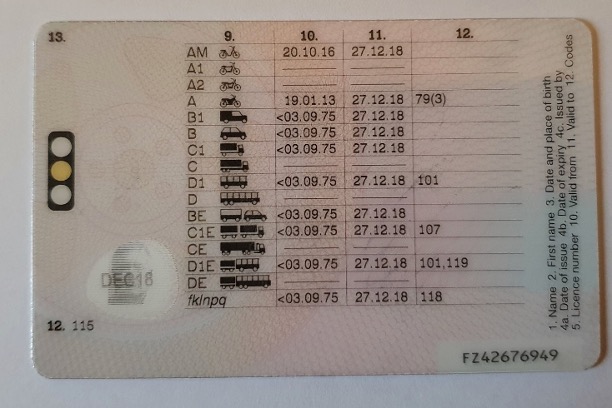
(Photo courtesy of Barry Norris)
If you passed your driving test after 1 January, 1997 and before 1 January, 2013, you will have category B and B1 on your driving licence. This limits you to driving motorhomes of up to 3,500kg and trailers of up to 750kg. To drive a motorhome of over 3,500kg, you will need to take an additional test to gain the C1 category.
If you passed your driving test before 1 January, 1997, you should have C1 and C1 + E categories on your licence, which allow you to drive motorhomes up to 7,500kg and to drive a motorhome and trailer with a combined weight of under 12,000kg if you have also passed your full trailer test, otherwise the combined weight is capped at 8,250kg.
When you reach 70, you’ll need to renew your driving licence every three years. While you will automatically retain categories B and B1, you will need to submit a D4 and D2 medical form to retain C1, which your doctor will need to fill out every three years. Depending on your medical details, this isn’t set in stone – for some conditions you may need to renew more frequently.
B and B1 categories for motorhomes under 3,500kg can be renewed online, but licence category C1 renewals (for motorhomes up to 7,500kg) must be done by post using form D47PU. Always renew your licence well before it expires – especially during summer holidays when the DVLA is busiest. You should get renewal forms by post 56 days before your current licence expires.
Should I get a trailer for my motorhome?
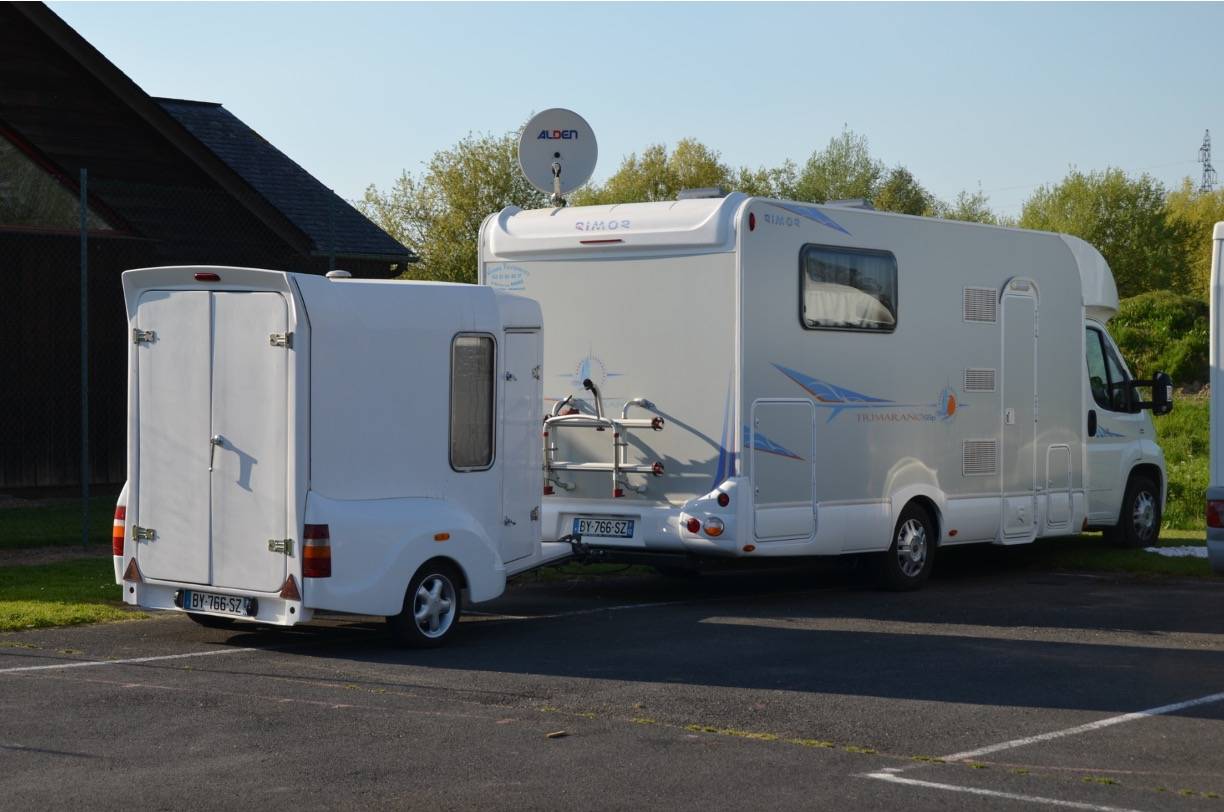
(Photo courtesy of Barry Norris)
The first point to make about trailers is to consider if your motorhome is suitable for a towbar. If it has a garage, or a long rear overhang, a substantial frame will need to be in place to allow a towbar to be fitted. The weight of this needs to be taken into account. You also need to know the maximum tow weight of your motorhome – check with the converter. It is typically from 1,500kg to 2,500kg.
If you have a motorhome first registered on or after 1 April, 2012, the towbar must be EC type approved. Any good motorhome specialist towbar supplier will have a range of brands that will meet these approvals. For vehicles registered prior to 1 April, 2012, you have a little more flexibility in towbar versions. With a towbar and suitable electrics fitted, you then have to consider which sort of trailer will be best.
Again you need to check your driving licence – the categories you have will depend on when your licence was issued, any medical conditions or what tests you’ve passed. Category B allows you to drive trailers of up to 750kg if the motorhome is no more than 3,500kg. Category C1E allows you to drive a motorhome of between 3,500kg and 7,500kg with a trailer of over 750kg. C1E is usually linked to a restriction code 107 (as printed on your driving licence), which limits the total weight of motorhome and trailer to 8,250kg. So, for a 3,500kg motorhome, you can tow up to the maximum towing limit with this code.
Any trailer (or car on an A-frame) that you tow that weighs over 750kg must have a separate braking system fitted to it. You will also need to allow for the noseweight of the trailer. This is the force that pushes vertically downwards onto the head of the towball.
Towbar makers will issue their towbar with a maximum noseweight. Typically it is between 75kg and 100kg. Whatever noseweight figure your trailer exerts on the towball must be accounted for with your payload. If it exceeds your payload or noseweight limit, you can adjust the loading of the trailer to reduce the noseweight.
With a box trailer you ideally want to place heavy items low down and centrally over the axle (or axles). Load them evenly and as level as possible. Secure or wedge items carefully so they can’t move in transit and alter the weight distribution. A towed trailer or car on an A-frame must have rear lights and display reflective triangles.
Before you invest in a trailer, consider how easy it is to move around – small, single-axle box trailers are easy to move around by hand, while larger twin-axle trailers require much more strength or two people to manhandle. You may even need to consider caravan motor movers on larger trailers.
More payload considerations
First check your licence code categories with care – especially if you’re aged over 70. If you are limited to a 3,500kg motorhome, then think carefully about the weight of each and every optional item you specify. You’ll need to tot these up as you go.
This is further complicated as manufacturers tend to quote the weight as the mass in running order (MIRO), which may exclude such items as gas bottles and leisure batteries. The MIRO is often listed with a 90% filled fuel tank, empty water tanks, 6kg to 15kg allowance for gas bottles and a driver weight of 75kg. But this varies between manufacturers, so read the brochure small print for any motorhome you’re thinking of buying.
Every addition – from decals to a towbar – has a weight that needs to be subtracted from the available payload. It’s not just the manufacturer options you need to consider, but also the dealer-fit items such as the awning, satellite TV dish and solar panels. Even the new crockery you buy from the dealer shop to match the new motorhome's upholstery needs to be taken into account.
Final thoughts
So, while all that sounds complicated, it doesn't have to be. If you are buying a new motorhome and your licence does not allow you to drive over 3.5 tonnes, then payload is critical – as well as being fairly realistic about the amount of options you'll be able to tick. This is particularly important if you plan to travel with more than two on board or have a secondary hobby that involves heavy kit. If you have a driving licence with C1 on it then you may be able to get your motorhome uprated, but this might not be as much as you'd like without expensive upgrades.
Our key advice is to visit a weighbridge, whether you have a new or new-to-you motorhome or even a motorhome that you've owned for years. Any options, dealer-fit accessories, items fitted by previous owners or even your own upgrade projects might be taking you perilously close to that gross vehicle weight figure...
Buying Your Perfect Motorhome 2024
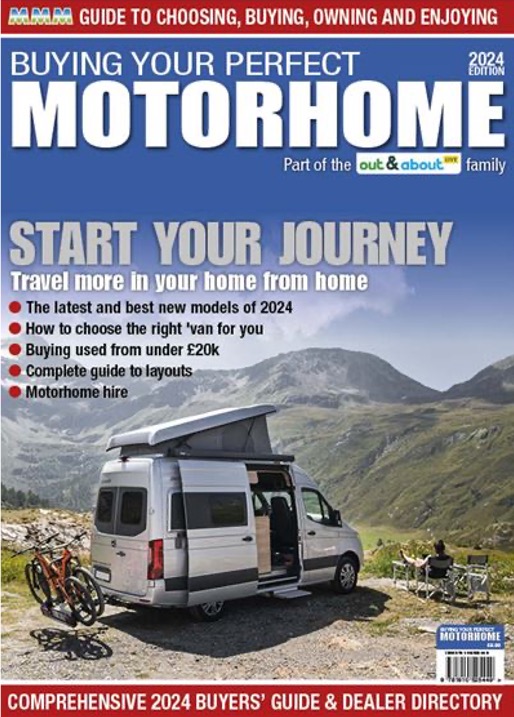
Looking for more great motorhome and campervan buying information? You need the brand-new guide to Buying Your Perfect Motorhome, it’s packed with everything you need to help you with choosing, buying, owning and enjoying your very first motorhome or campervan.
Learn more about it here.
Digital Download it now from Pocketmags for just £9.99.
Printed Or order a printed edition for just £9.99.
Get MMM for just £29.99 a month!

MMM is Britain’s best-selling motorhome magazine and it has been for over 55 years. Each four-weekly issue is packed with the best motorhome travel features, genuine reader reviews of campsites, in-depth motorhome reviews, plus the latest technical advice, buying tips and much more.
MMM’s fully searchable digital library gives you access to the latest issues, plus every edition of MMM since January 2012.
Expert motorhome advice to your door!
Why not subscribe to one of our fabulous magazines and get expert advice, travel ideas, technical help and all the latest news for your motorhome and your motorhome adventures!

Want to know more about MMM magazine?
Every month MMM has articles written by motorhomers who have been there and done it, from great UK and European (and further afield) tours, campsite reviews, owners' reports and DIY projects among other things.
MMM's tests, reviews and expert buying guides are not to be missed. MMM's technical advice is a must and includes everything from weekend jobs to longer-term DIY projects. And much more!
About MMM magazine
Want to know more about What Motorhome magazine?
Every issue of What Motorhome magazine provides essential buying advice for anyone looking to buy a new motorhome or campervan or upgrade their existing model. With a pedigree of over 30 years of offering the best motorhome and campervan buying advice, every issue of What Motorhome includes more new motorhome and campervan reviews than you will find in any other magazine.
About What Motorhome
Want to know more about Campervan magazine?
Campervan is the exciting monthly magazine that will give you all the inspiration you need to explore the world in your campervan. Every issue is packed with real-life campervanning experiences, inspiring travel ideas in the UK and further afield, the best campsites to stay on, campervan road tests and reviews of the latest models, and much more!
About Campervan magazine







Recent Updates
Engine management lights: all you need to know
What is the engine management light? What does it mean, and what do I have to do? ...
Motorhome air suspension: all you need to know
Motorhomes are heavy and the additional weight of equipment and height of the bodywork can increase the loads ...
Motorhome WiFi: how to get better motorhome internet
Staying connected on the move is more and more essential, so relying on campsite WiFi isn't an option – here ...
A class of their own - our guide to A-class motorhomes
Thinking of trading up to an A-class, or even going straight to the top of the motorhome tree? We guide you ...
Explore overseas on a motorhome dream tour
Enjoy exotic travel in a campervan or motorhome by hiring, swapping with someone else or exporting your ...
Motorhome water systems: everything you need to know
On-board water is an important part of every motorhome – here’s everything you need to know ...
Campervanning in Europe: what you need to know
Whether you're planning a leisurely drive through the French countryside, navigating bustling city streets in ...
Campervan security: all you need to know
With thefts on the increase, it’s important to know how to keep your campervan secure and prevent campervan ...
Campervan furniture: everything you need to know
Our campervan experts guide you through all the essentials for your campervan, including tables, chairs, ...
Campervan finance: how to fund your purchase
Here we look at the different types of campervan finance available, to help you decide what’s the best option ...
Other Articles
Britain’s best used motorhomes
Want a great motorhome without paying the premium for a new one? Here's a guide to the best you can get in the pre-owned market for each layout, ...
Which motorhome? Choosing the perfect motorhome for you
Choosing a motorhome or campervan is one of the biggest buying decisions you’ll ever make, so it's important ...
Campervan washroom essentials: stay fresh on the road
Our guide will take you through the campervan washroom essentials you'll need so you're well-prepared for ...
Dogs in campervans: all you need to know
Follow our advice and your dog will enjoy campervanning as much as you do ...
Electric campervans: all you need to know
Our guide will take you through everything you need to know about electric campervans and what the future ...
Motorhome electrics: a complete guide to your motorhome electrical set-up
Motorhome electrics can dramatically enhance the convenience and comfort of your vehicle – but they can be ...
Lighting for campervans: all you need to know
We guide you through all the lighting options available for you and your campervan, including interior ...
Electric bikes for motorhomes: our ultimate guide
Read our comprehensive guide to electric bikes for motorhome owners, helping you add electric power to your ...
Our guide to 'cheap' motorhomes in 2024
If you're on the hunt for an affordable new motorhome, this is the best place to start – we've rounded up a ...
Campervans in winter: all you need to know
Here's your guide to preparing your campervan for the colder months, whether you will be using it or putting ...